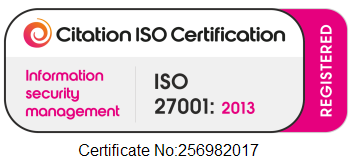Reducing unconscious bias in the recruitment process is a goal most employers look to achieve.
When we think about this issue, we tend to base it on demographical factors such as age, race, or gender, but it is something we naturally judge far deeper as human beings.
From what someone wears, where they live, to the food they eat or even the football team they choose to support, we will use that information to form a stereotype.
So, even though it may not be possible to ‘beat’ this issue in recruitment, there are certainly a few ways we can adjust to minimise it.
Anonymise Shortlisting
Shortlisting is a crucial decision stage in the recruitment process and so one where we want to minimise the impacts of unconscious bias. One way we can do this is by anonymising it. This removes personal candidate information before the stage of hiring managers approval. By reformatting candidate CVs and/or Application Forms, you can actively remove data to reduce any subconscious discrimination. To ensure the hiring process is truly a level playing field, recruitment software can be used to automatically blind that information for you.
Format the Interview Stage
The interview stage is where we get to know the candidate behind the CV, and so with that, we again we open up the opportunity to become subconsciously bias. Although, this stage is still very much crucial in the hiring decision, there are ways we can minimise bias by standardising it. By approaching each interview in the same format, with the same time and questions asked, we can judge purely on factors which relate directly to work performance. This allows us to take more control of the interview process and become less reliant on a candidate’s ability to naturally unfold information which may be unreliable to depict job success.
Reformat CV’s
It can be difficult to prevent unconscious bias when candidates already provide you with a level of standardised personal information before it is even requested, like that of the level of detail provided on a CV. But one way you can combat this is by using your own branded CV templates. By doing so, you can choose to reformat the CV to match your standards, so we focus less on demographic characteristics and more on their skills and qualifications. Again, the right recruitment software can do this automatically for you.
Analyse Language Choice
Language can have a strong impact on our candidate pool. This affects not only how that pool perceives us but the diversity of the pool who chooses to pursue the application. The language used in a job description is prime example of this. Using particular words such as ‘competitive’, or ‘strong’, may be perceived as a more masculine term, just like, ‘support’, and ‘collaborate’, may be perceived as more feminine. This can then convince the other gender of their unsuitability. But because it may be hard to analyse your written word to this level, there are programmes available that can flag this language for you and replace it with a more neutral approach.
Set a Work Sample Task
Instead of relying heavily on candidate information, employers can set a practical work exercise for candidates to complete. These tests generally represent simple tasks that would need to be completed as part the general day to day, and so can help us to better judge a candidate’s compatibly by the way they choose to complete it. This allows employers to better judge work performance, future behaviour, and compare candidates by one another based only on what they produce.
Score on Likeability
Every employer chooses to focus on some traits more than others, whether that is their social responsibility, personality, experience, or if they are a cultural fit. This ensures that they find the candidate that is perfect for them, and likability is clearly a determining factor for hiring talent. But this is not something we should necessarily be ashamed of or try to combat because to protect the dynamics of the team, we may judge a candidate based on team suitability, something which is vital if we still want to meet collective goals. But to not rely solely on this judgement, it can be useful to score each candidate, i.e., from 1-10. This allows us to take more control of our judgment by weighing up candidates equally. For example, where a candidate may score low in personality, they may score incredibly high in experience and therefore be the better candidate.
Evaluate your Diversity
To know if your hiring process holds any unwanted bias, evaluating the diversity of your current workforce is often a good indicator. With this, some business then chooses to set diversity targets. And although controversial, there are clear benefits to measuring this in some form. Openly setting these goals can improve work culture, employee performance and encourage your current workforce to embrace diversity. As we said, these goals are not to solve this issue, but by conducting regular reviews and setting realistic targets, we can hopefully flag the areas that need improvement.
It is also worth considering if you have the right resources in-house like recruitment software to combat this issue, or whether you would need to outsource an external recruiter. You can still have the final say on the hire, but you would get a diverse set of applicants from the outset.
But remember, whichever path you choose to go down to minimise the impact of unconscious bias, do so as balanced as possible. Do not damage the candidate experience, do not do it to just tick a box, and importantly, ensure that you are still hiring talent that is genuinely good for the business.
Need any more help to meet diversity targets and minimise your unconscious bias? Get in touch! Our solutions may be able to help.
Subscribe to our newsletter to get our articles sent straight to your inbox!




Comments are closed